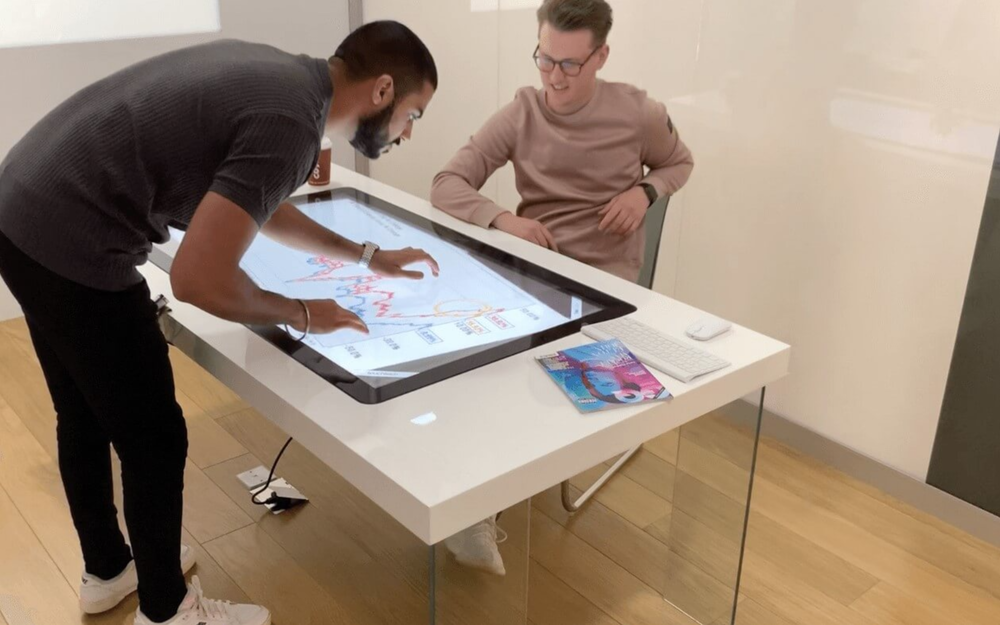Ricocheting Waves Pinpoint an Object’s Location
Trying to image or locate an object with high resolution using long-wavelength electromagnetic or sound waves may seem doomed to fail. There are tricks that involve a probe placed close to the object, and there have been a few specialized techniques that avoid the close-up probe. But now researchers have shown that they can determine a small object’s location with high resolution simply by allowing waves to bounce around in an echo chamber containing the object [1]. Their precision of 1/76 of a wavelength of the imaging microwaves far exceeds the half-wavelength resolution limit that imaging experts would generally expect in the absence of a close-up probe. The technique could lead to high-resolution imaging or localization within any reverberant environment, such as a room.
A 5-MHz medical ultrasound beam cannot resolve features much smaller than its wavelength of 0.3 mm. Conventional imaging with light is similarly limited by the wavelength. Information on smaller-scale features is contained in shorter-wavelength reflections that decay within about a wavelength of the object being imaged. So most high-resolution imaging techniques require a probe placed close to the object.
But subwavelength information can also be obtained far from the object. In recent years, researchers have come up with a few ways to perform subwavelength imaging without an invasive probe or other nearby manipulations, but they are somewhat complicated, says Philipp del Hougne of Rennes University in France. The technique he and his colleagues developed is simpler and can be used in more situations.
The method builds on the so-called coded aperture concept. One version of this imaging approach involves aiming waves at an object and placing a scattering structure between the object and a single-pixel detector. For example, an irregularly shaped metallic cavity could be a scattering structure for microwaves. Researchers can take multiple readings from the detector as the scattering structure is masked to block waves in various patterns and then process the data to reconstruct a complete image.
In the usual coded aperture imaging, the waves from the imaging source encounter the object only once before reaching the detector. But if the waves could somehow interact with the object multiple times, the reflection pattern would be more sensitive to subwavelength details, the team reasoned, based on well-known principles of wave scattering. To increase the number of object-wave interactions during imaging, del Hougne and his colleagues decided to place the object inside the scattering structure.
The researchers performed a proof-of-concept experiment that determined the location of a metallic cube inside a metal box. The cube, which was 4.5 cm across, was placed on a turntable that allowed it to be moved around within the box. The meter-wide box also contained antennas for emitting and receiving microwaves of wavelength 12 cm, along with irregularly-shaped structures to provide random scattering surfaces. A programmable array of reflective elements in the box, called a metasurface, allowed the researchers to vary the scattering of microwaves, as required for coded aperture imaging.
In the experiment, the researchers measured the amplitude of microwaves at the receiver during a sequence of random metasurface configurations. First, they trained a neural network to decode the measurements based on “known” cube locations. Then, moving the cube to “unknown” locations, they used the neural network to reconstruct the cube’s position to within 0.16 cm, or 1/76 of a wavelength.
By repeating the experiment with the box’s top open, closed, and partially ajar, the team confirmed that the most precise localizations occurred when the reverberating waves remained in the box for the longest time. “The longer the waves bounce around in the [box], the more often they encounter the object, and the more sensitive they become to its sub-wavelength details,” he explains.
Steven Cummer, an electrical and computer engineer at Duke University, is impressed but cautious. “This is a concept demonstration, and there are a lot of challenges in figuring out how to make it work in a real application,” he says. “But the idea is clever.”
The technique could be applied to many types of wave phenomena, del Hougne says. A future device could use an ordinary room as an echo chamber to locate objects via radio or acoustic waves. The method could also be used to improve systems that transform a tabletop into an interactive touch screen using elastic waves reverberating on the surface. These waves can be used to localize a finger tap, and the new results suggest that such systems could provide resolution much better than the previously assumed half-wavelength limit.
–Rachel Berkowitz
Rachel Berkowitz is a Corresponding Editor for Physics Magazine based in Vancouver, Canada.
References
- M. del Hougne et al., “Deeply subwavelength localization with reverberation-coded aperture,” Phys. Rev. Lett. 127, 043903 (2021).







